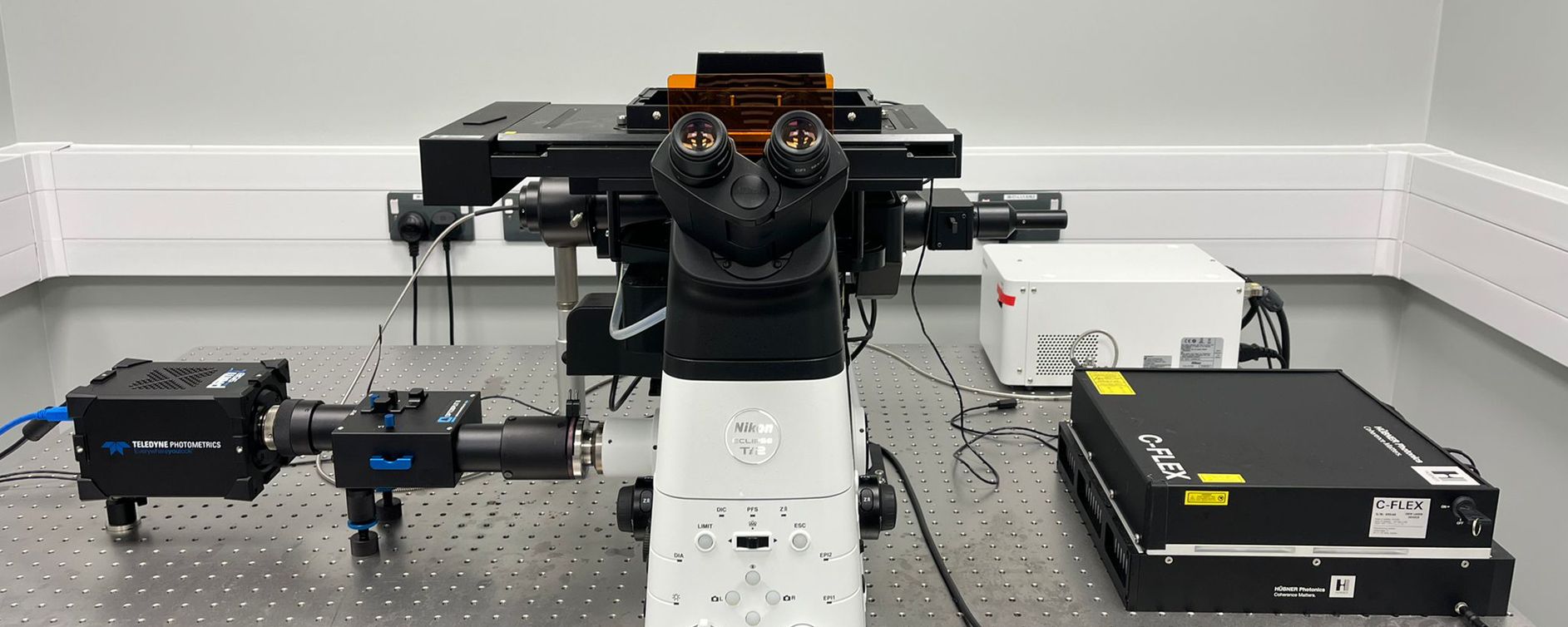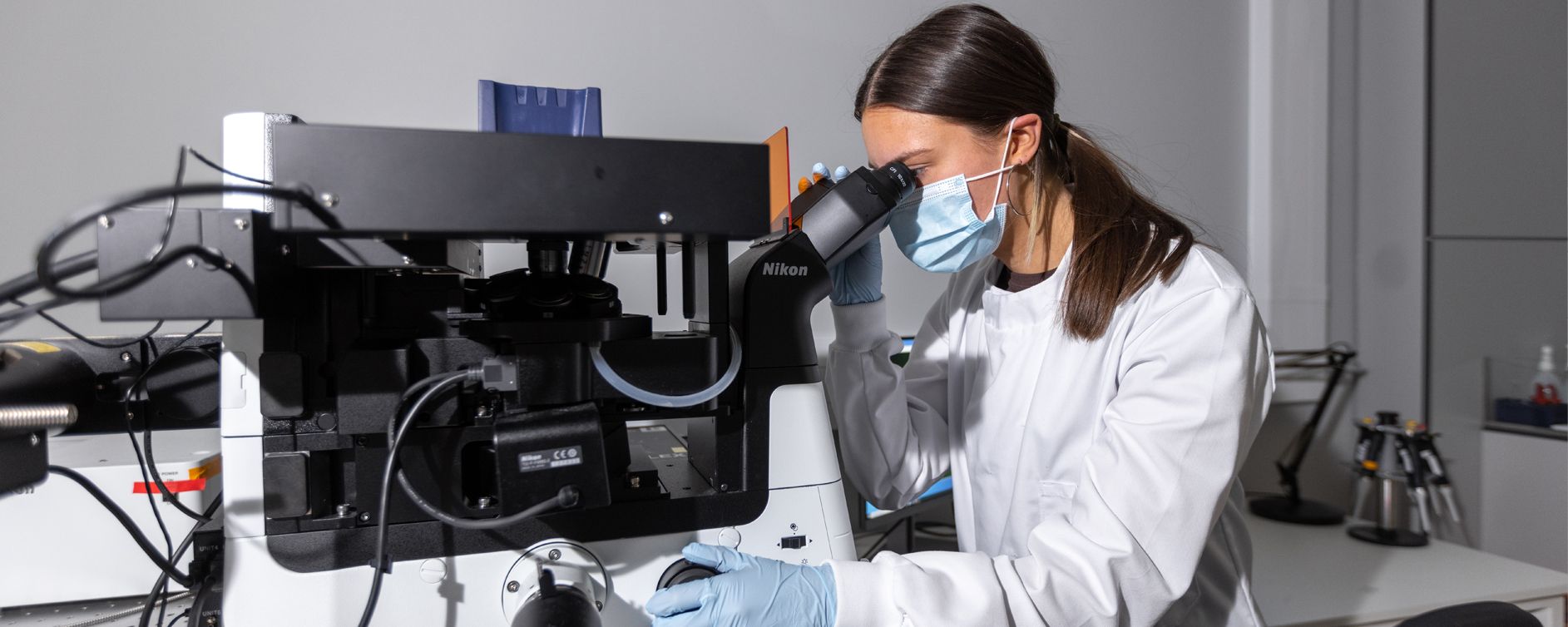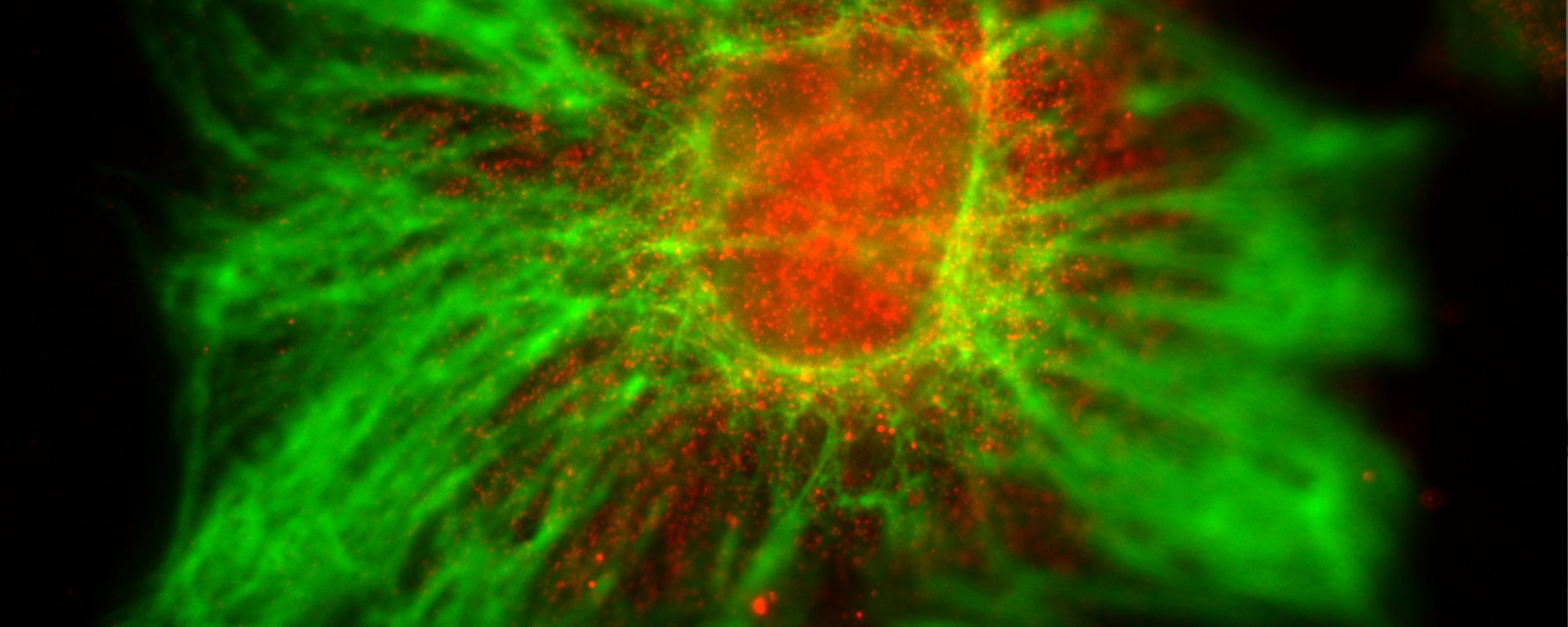Technical experts
Dr Yu Ye
UK DRI Group Leader
Dr Michael Morten
Postdoctoral researcher - Ye lab
Ziba Shadman
Research Technician - Ye lab
Location: Level 7 Sir Michael Uren Hub, White City Campus
Technique: Microscopy - Light
Manufacturer: Nikon
View product page
The Nikon Ti2 inverted fluorescence microscope provides a motorized and intelligent platform for advanced imaging applications.
The TIRF microscope increases the signal-to-background ratio compared to traditional epi-microscopy and facilitates imaging at single-molecule resolutions (~ 25 nm). Imaging below the diffraction limit enables the characterisation of the structure of protein complexes inside cells and tissue samples. The EM-CCD camera can record movies at 1 frame/ms, and this setup can perform single-particle tracking using multiple colours in live cells at high speeds. These techniques can be controlled through custom written scripts which enables automatic data collection and increases the microscope’s capacity for high-throughput imaging.
Contact
For enquiries regarding the technology, please contact Dr Michael Morten, a postdoctoral researcher in the Ye lab.
To discuss use of the microscope, please contact Dr Yu Ye, UK DRI Group Leader.
How temperature and circadian rhythms intersect to regulate a protein shown to protect against neurodegeneration
A new study led by Dr Marco Brancaccio (UK DRI at Imperial) and Dr Marieke Hoekstra (former UK DRI at Imperial, now VIB-KU Leuven Center for Brain & Disease Research) offers a deeper insight into how a neuroprotective pathway is regulated both by temperature and the body clock. This research, published in the journal PNAS, could open up new therapeutic avenues for neurodegenerative disease. Read more on the UK DRI website
Introducing Cynthia Sandor: Pioneering earlier detection of Parkinson’s
Dr Cynthia Sandor, former Emerging Leader at the UK DRI at Cardiff, joins the UK DRI at Imperial as a Group Leader, where she will be tackling early diagnosis of Parkinson’s.
With a background in genetics, Dr Sandor uses computational methods to bring greater understanding to the underlying molecular mechanisms of Parkinson’s. Read more about Cynthia's work on the UK DRI website.




